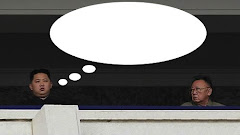Last month, on a gravelly embankment near this town, President Lee Myung-bak inaugurated an ambitious, and controversial, public works project that will make him either famous or infamous long after his five-year term ends in 2013 and could even determine who succeeds him.Personally, I'm not sure how I feel about this. It's an odd thing coming at a time when some folks in the western US are considering dismantling some of their dams. And I'd certainly rather not see this submerge some of Korea's more pristine canyons, like we nearly saw with the Tonggang River about ten years ago. In other words, Korea does not need Three Gorges Lite.
Mr. Lee, a former chief executive of Hyundai Construction nicknamed “The Bulldozer” for his penchant for massive engineering schemes, says the 22.2 trillion won, or $19.1 billion, program to remake South Korea’s four longest rivers will generate thousands of jobs, improve water supply and quality and prevent flooding, while providing a model for environmentally sound development.
Under the “Four Major Rivers Restoration Project,” engineers have begun work to remake the Han, Nakdong, Kum and Youngsan rivers, some of which were heavily polluted during the country’s rapid industrialization.
For three years they will dredge river bottoms. They will build dikes, reservoirs and hydroelectric power stations. When the work is done, according to the government blueprint, these rivers will “come alive” with tourists, sailboats and water sports enthusiasts. Sixteen artistically designed dams will straddle the rivers, creating pristine lakes bordered by “wetland parks.” A 1,700-kilometer, or 1,050-mile, network of bicycle trails will run along the rivers.
Meanwhile, opinion surveys show more South Koreans oppose Mr. Lee’s river project than support it. Critics say it will prove an environmental disaster and waste public funding better applied to education and social welfare. They charge that this is simply a repackaging of Mr. Lee’s earlier dream of linking the Han and Nakdong rivers to create a “Grand Korean Waterway” across the nation, a proposal he abandoned in the face of widespread opposition.
On the other hand, Korea does have a problem with flooding, and maybe better flood control is in order. Much of the litter along Korea's riverbanks, I believe, was not deposited there but was washed to that point — often after it was appropriately deposited in garbage bags or trash bins — by rain and floodwaters (it's easy to see how this happens on Oahu as well). And flooding, of course, causes death and destruction that often creates more environmental degradation.
But is this a case of destroying the village in order to save it? What will happen if the bottoms are dredged? Will this destroy a largely intact ecosystem, or will it clear the way for one? Will it be done slowly and carefully enough that flora and fauna will be able to move downstream when construction is in a certain area, and then regrow back upstream when the construction is done?
Frankly, I'd like to see an agenda-free and objective assessment of the project before I solidify my support or opposition. Right now all I have is questions. Sphere: Related Content






















No comments:
Post a Comment
Share your thoughts, but please be kind and respectful. My mom reads this blog.